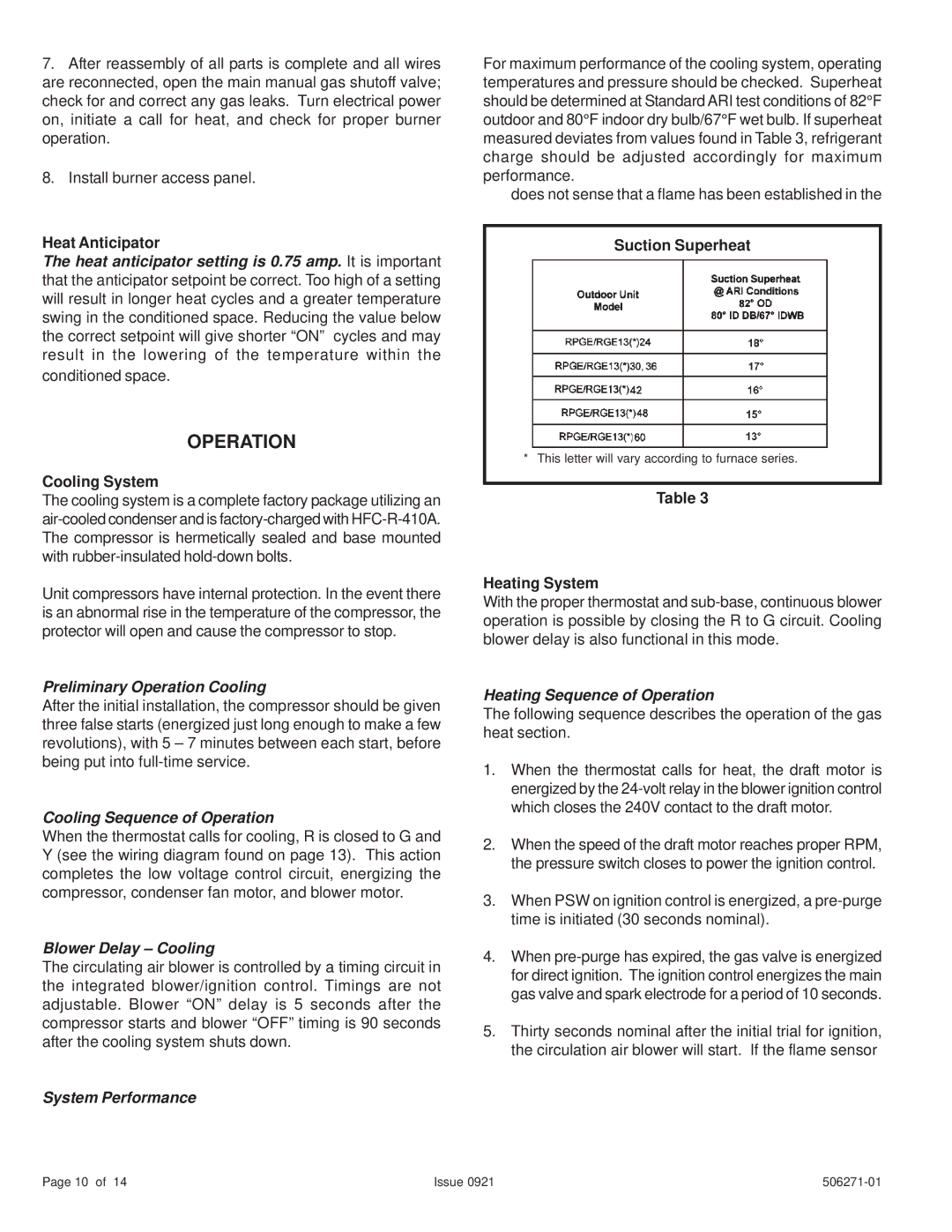506271-01 specifications
Allied Air Enterprises has positioned itself as a leader in the HVAC industry, and one of its standout products is the 506271-01 unit. This particular model exemplifies the innovative engineering and commitment to quality that defines Allied Air's approach.The 506271-01 is designed for residential applications, making it an ideal choice for homeowners looking for efficient and reliable heating and cooling solutions. It operates with a focus on energy efficiency, enhancing comfort while minimizing electricity costs. The unit meets or exceeds the efficiency standards set by the industry, ensuring that users can enjoy consistent performance throughout the year.
One of the key features of the 506271-01 is its robust construction. Built with high-quality materials, this unit is designed to withstand the rigors of daily use and maintain functionality in various environmental conditions. Its compact design allows for easy installation in tight spaces, making it versatile for various home layouts.
Another noteworthy aspect of the 506271-01 is its advanced technology integration. The unit comes equipped with a digital thermostat that provides precise temperature control. This feature allows homeowners to set personalized comfort levels easily while optimizing energy consumption. Additionally, the model supports smart home integration, enabling remote access and control via mobile devices, which adds convenience and efficiency to everyday heating and cooling.
Moreover, the 506271-01 prioritizes the user experience by including noise-reduction technology. This ensures that operation remains quiet, allowing for a peaceful indoor environment free from disruptive sounds. The unit operates using environmentally-friendly refrigerants, aligning with the industry's shift towards greener technologies and contributing positively to environmental conservation efforts.
Maintenance is also simplified with the 506271-01, as it features accessible components that allow for easy servicing. This not only extends the life of the unit but also helps in reducing long-term costs associated with repairs and replacements.
In summary, Allied Air Enterprises’ 506271-01 is a powerful yet efficient HVAC solution that offers homeowners advanced technology, user-friendly features, and reliable performance—all while promoting energy conservation and environmental responsibility.

